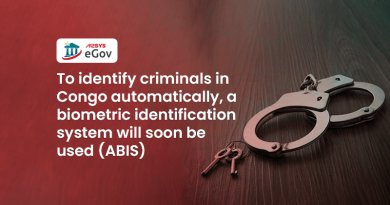Mobile Incident Reporting Cuts Response Delays, Boosts Accuracy
Mobile incident reporting transforms law enforcement by enabling officers to send details directly from their devices, reducing response delays and improving accuracy. This digital shift addresses issues like fragmented workflows and manual errors, enhancing public safety and operational efficiency.
TL;DR
- Mobile incident reporting allows law enforcement officers to send details directly from their devices, reducing response delays and improving accuracy.
- Faster response times are crucial for public safety, leading to higher arrest rates and more efficient operations.
- Digital tools minimize manual errors and ensure data accuracy, even in areas with poor connectivity.
- Mobile reporting enhances compliance with legal standards through digital records with timestamps and audit trails.
- Smart resource management through mobile tools optimizes officer deployment and reduces waste.
- Real-world examples, like the Salt Lake County Sheriff's Office, demonstrate the effectiveness of mobile reporting in improving data management and security.
- Transitioning to digital systems reduces administrative burdens, allowing officers to focus more on fieldwork.
Discover how M2SYS eGov solutions can transform your agency's operations by visiting our contact page for more information.
Have you ever wondered how much time law enforcement loses when officers jot down notes on paper at a chaotic scene, only to transcribe them later? This common issue slows down responses and invites errors. Yet, mobile incident reporting for law enforcement changes that by letting officers send details right from their phones or tablets. Agencies across the globe now use these tools to speed up work and get facts straight.
Why Do Response Times Matter in Law Enforcement?
Response times can make or break public safety. In fact, a study from the National Institute of Justice shows that faster responses lead to higher arrest rates in serious crimes. However, traditional methods often cause delays. Officers deal with fragmented workflows where they fill out forms by hand and then wait to share them with dispatch or other teams. This setup not only wastes time but also risks losing key details in the shuffle. Moreover, high costs come into play when agencies spend on printing and storing paper records. And let’s not forget integration issues—old systems rarely connect well with new tech, leading to more headaches.
Mobile incident reporting for law enforcement tackles these problems head-on. Officers capture photos, notes, and witness statements on the spot and send them securely to command centers. As a result, teams get real-time updates, which helps them decide quickly on next steps. For example, during a major event like the 2013 Boston Marathon bombing, rapid data sharing proved vital. Agencies that adopted digital tools afterward saw big improvements in how they handled crises.
How Does Mobile Reporting Improve Data Accuracy?
Accuracy saves lives and builds trust. Paper forms often lead to mistakes, like misspelled names or missed details, especially under stress. A report from the Bureau of Justice Statistics notes that manual errors affect up to 20% of incident reports in some departments. But with mobile tools, officers use dropdown menus, auto-fill options, and voice-to-text to cut down on slip-ups. Plus, these apps work even in areas with spotty signals, so data stays complete no matter what.
Transitioning to paperless systems also boosts compliance. Digital records meet legal standards more easily because they include timestamps and audit trails. This shift addresses pain points like delayed data sharing between departments. For instance, investigative units no longer wait days for reports; they access them instantly. Consequently, cases move faster, and officers spend less time on admin tasks.
What Role Does Smart Resource Management Play?
Effective resource use keeps agencies running smoothly. Without it, teams might send too many officers to one spot while leaving others short. Mobile incident reporting for law enforcement integrates with tracking systems to show live needs. Commanders see where help is required and assign people or gear accordingly. This approach reduces waste and meets accountability rules set by federal policies, such as those from the Department of Justice.
Historical trends show a clear move toward digital solutions. In the early 2000s, many U.S. agencies stuck with legacy systems that resisted updates. Customization was tough and expensive, often leading to deployment delays. Today, modern platforms solve that by fitting seamlessly into existing setups. They handle case tracking from start to finish, ensuring nothing falls through the cracks.
Real-World Examples of Mobile Reporting Success
Take the Salt Lake County Sheriff’s Office in Utah. They integrated secure inmate management to keep data consistent from booking to release. This setup improved how they handled detainee info, cutting errors and ensuring role-based access. Similarly, correctional facilities across the U.S. have used these tools for identity checks on inmates and visitors, which prevents fraud and strengthens security.
These stories highlight how practical tech makes a difference. With over 20 years working alongside governments and law enforcement in the U.S. and worldwide, M2SYS has seen these challenges firsthand. Our eGov platform builds and delivers eLaw Enforcement solutions that fit right in. For mobile incident reporting, it offers features like real-time capture and secure transmission, even in low-connectivity zones. Police departments and public safety agencies find it eases fragmented workflows and high costs.
Can Mobile Tools Reduce Administrative Burdens?
Yes, and that’s a game-changer for officers. Instead of drowning in paperwork, they focus on the streets. Digital booking records streamline detainee management, reducing processing times. Correctional administrations benefit too, as integrated systems track cases without constant manual updates. Government ministries appreciate the compliance features that align with strict regulations.
In short, mobile incident reporting for law enforcement cuts delays and boosts accuracy by going digital. It addresses real issues like integration hurdles and legacy system woes. Platforms like M2SYS eGov provide the backbone for these changes, drawing on proven experience to help agencies thrive. If your team faces these pains, exploring such solutions could make all the difference.
FAQs about Mobile Incident Reporting for Law Enforcement
- What is mobile incident reporting?
Mobile incident reporting refers to the use of digital tools to document and transmit incident details directly from the scene using mobile devices. It aims to improve the speed and accuracy of data capture. Learn more about it here. - Why are response times crucial in law enforcement?
Quicker response times are associated with higher arrest rates in serious crimes, as they help prevent delays caused by traditional, manual processes. More details can be found in our article on Response Times. - How does mobile reporting increase data accuracy?
By using features such as dropdown menus, auto-fill, and voice-to-text, mobile reporting reduces manual errors, thereby enhancing data accuracy. Explore more about it here. - What impact does it have on administrative burdens?
Mobile tools reduce administrative tasks by streamlining workflows, allowing officers to focus more on operational duties rather than paperwork. Discover more about how they ease Administrative Burdens.










